คุณเข้าสู่บทความที่เน้นที่จะสร้างทัศนคติต่อเรื่องราวของการเรียนภาษาอังกฤษและประโยชน์ของมันในโลกที่เปลี่ยนแปลงอย่างรวดเร็ว บทความนี้จะแยลายแนะอธิบายเกี่ยวกับประโยชน์ของการเรียนภาษาอังกฤษ และอธิบายเกี่ยวกับวิธีที่เราสามารถใช้ภาษาอังกฤษในชีวิตประจำวันของเรา จากการสื่อสารที่มีประสิทธิภาพไปถึงการเข้าถึงวัฒนธรรมโลกที่กว้างขวางและสามารถใช้ได้ทั่วโลก
หน้าร้านหนังสือ
รู้สึกเป็นแห่งที่ประทับใจและมีความเจริญกว่าระดับที่คาดหวัง ร้านหนังสือเปิดประทับใจด้วยแสงที่เปิดเผยและรสทานของหนังสือที่มีความสวยงามและหลากหลาย มีเสียงประกาศจากเจ้าหน้าที่ร้านหนังสือที่เปิดดูดตาเด็กๆเข้ามาเรียนรู้และสนุกสนาน
เมื่อเด็กๆเข้ามาเข้าร้าน พวกเขาจะรู้สึกเหมือนตนเองกลับบ้านที่มีหนังสือและหน้าที่สนุกสนาน เจ้าหน้าที่ร้านหนังสือจะยินดีต้อนรับด้วยท่าทางที่อ่อนโยนและความอ่อนไหลที่ทำให้เด็กๆรู้สึกปลอดภัยและมีความสนใจในการสนทนา
ร้านหนังสือมีหลายช่วงที่แยกเป็นเนื้อหาที่ต่างกัน จากหนังสือเรื่องราวสัตว์สวยงามในเขต “Animal Stories” ไปจนถึงหนังสือเรื่องราวประวัติศาสตร์และวัฒนธรรมในเขต “History and Culture” มีหนังสือเรื่องราววิทยาศาสตร์และเทคโนโลยีในเขต “Science and Technology” และมีหนังสือเรื่องราวการเดินทางและประเทศที่มีชื่อเสียงในเขต “Travel and Countries”
หน้าร้านหนังสือมีหลายชั้นเดี่ยวและชั้นรวมที่มีที่นั่งสบายในบริเวณหน้าร้านเพื่อให้เด็กๆมีที่ที่จะเรียนเรียบร้อยและอ่านหนังสือได้สบาย มีหลายชุดหนังสือที่จัดเก็บอย่างเป็นระบบเพื่อให้เด็กๆงานหาหนังสือง่ายและได้เลือกหนังสือที่พวกเขาชื่นชอบ
ร้านหนังสือยังมีหนังสือเรียนเบื้องต้นสำหรับเด็กๆที่กำลังเรียนเรียบร้อยทางการเรียนเขียนและการอ่าน เจ้าหน้าที่ร้านหนังสือจะช่วยให้เด็กๆเลือกหนังสือที่เหมาะ
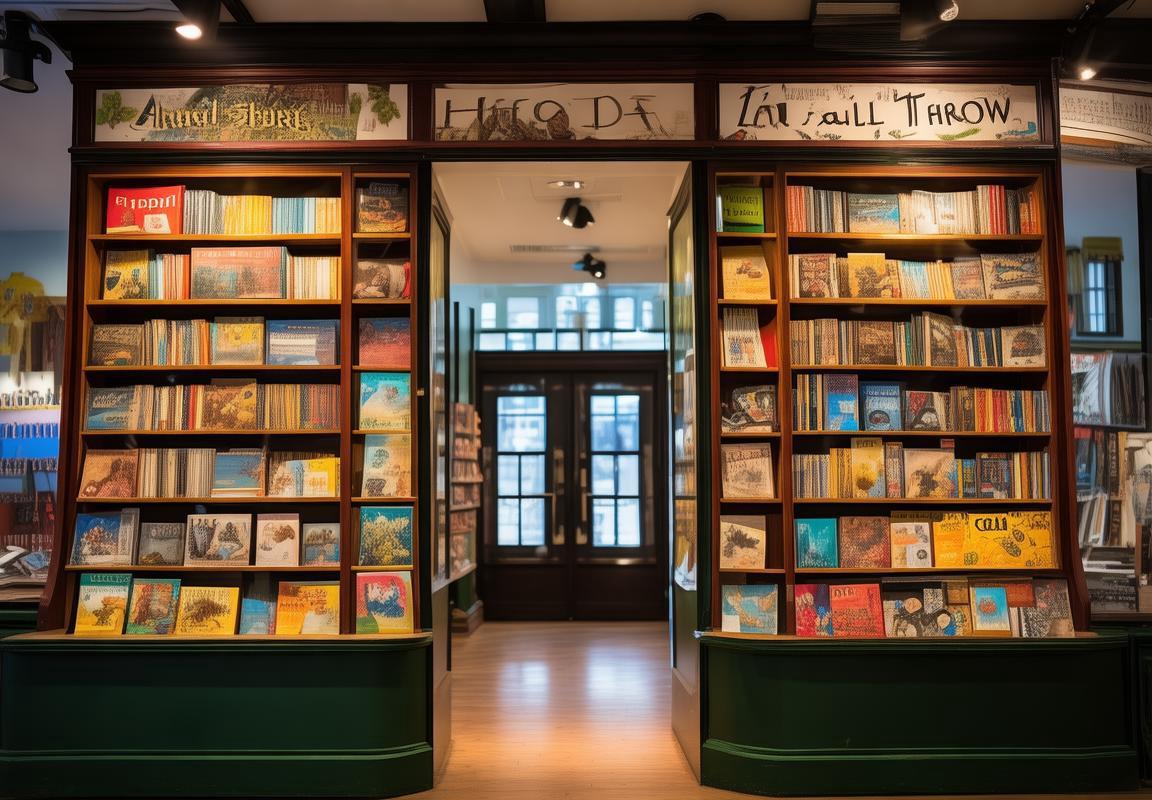
Hello! Can I help you find a book?
Yes, please! I’m looking for a book about animals.
Sure! Let’s go to the ‘Animal Stories’ section. Do you know what the word ‘animal’ is in English?
Yes, it’s ‘animal!’
Great! Follow me, and let’s find some books about animals.
Here we are. Look at all these animal books!
Wow, there are so many! Which one should we choose?
How about we look for a book with a picture of a lion? The word for lion in English is ‘lion.’
Lion! I like lions!
Let’s find the book with a lion on the cover. Do you know what ‘cover’ means?
Yes, it’s the front part of the book!
Exactly! Let’s find that book and see what it’s about.
Here’s a book about lions. Look at the pictures!
These are so cool! Do you think lions live in the jungle?
Yes, they do! In English, ‘jungle’ is ‘jungle.’ Let’s find a book about the jungle too.
Okay, let’s look for a book with a picture of a jungle.
Here’s a book about the jungle. Look at the animals!
There are so many animals in the jungle. I like this book!
Let’s take both books to the counter. Do you know how to say ‘counter’ in English?
Yes, it’s ‘counter!’
Great! Now, we just need to pay for them.
Here are the books we want to buy. How much are they?
I don’t know. Let’s ask the cashier.
Excuse me, how much do these books cost?
The book about lions costs $5 and the book about the jungle costs $7.
Okay, we have $10. Is that enough?
Yes, that’s enough. Here’s your change.
Thank you! We can take our books home now!
Yes, let’s go home and read our new books!
Look at all the new books we have! We’re going to read them tonight.
I can’t wait to read about the lions and the jungle.
Me too! Let’s go home and enjoy our new adventure.
Yes, let’s! I’m so happy we went to the bookstore today.
Me too! It was a great day!

Yes, please! I’m looking for a book about animals
“Sure! Let’s go to the ‘Animal Stories’ section. Do you know what the word ‘animal’ is in English?”
“Yes, it’s ‘animal!’”
“Great! Follow me, and let’s find some books about animals.”
“Here we are. Look at all these animal books!”
“Wow, there are so many! Which one should we choose?”
“How about we look for a book with a picture of a lion? The word for lion in English is ‘lion.’”
“Lion! I like lions!”
“Let’s find the book with a lion on the cover. Do you know what ‘cover’ means?”
“Yes, it’s the front part of the book!”
“Exactly! Let’s find that book and see what it’s about.”
“Here’s a book about lions. Look at the pictures!”
“These are so cool! Do you think lions live in the jungle?”
“Yes, they do! In English, ‘jungle’ is ‘jungle.’ Let’s find a book about the jungle too.”
“Okay, let’s look for a book with a picture of a jungle.”
“Here’s a book about the jungle. Look at the animals!”
“There are so many animals in the jungle. I like this book!”
“Let’s take both books to the counter. Do you know how to say ‘counter’ in English?”
“Yes, it’s ‘counter!’”
“Great! Now, we just need to pay for them.”
“Here are the books we want to buy. How much are they?”
“I don’t know. Let’s ask the cashier.”
“Excuse me, how much do these books cost?”
“The book about lions costs $5 and the book about the jungle costs $7.”
“Okay, we have $10. Is that enough?”
“Yes, that’s enough. Here’s your change.”
“Thank you! We can take our books home now!”
“Yes, let’s go home and read our new books!”
“Look at all the new books we have! We’re going to read them tonight.”
“I can’t wait to read about the lions and the jungle.”
“Me too! Let’s go home and enjoy our new adventure.”
“Yes, let’s! I’m so happy we went to the bookstore today.”
“Me too! It was a great day!”
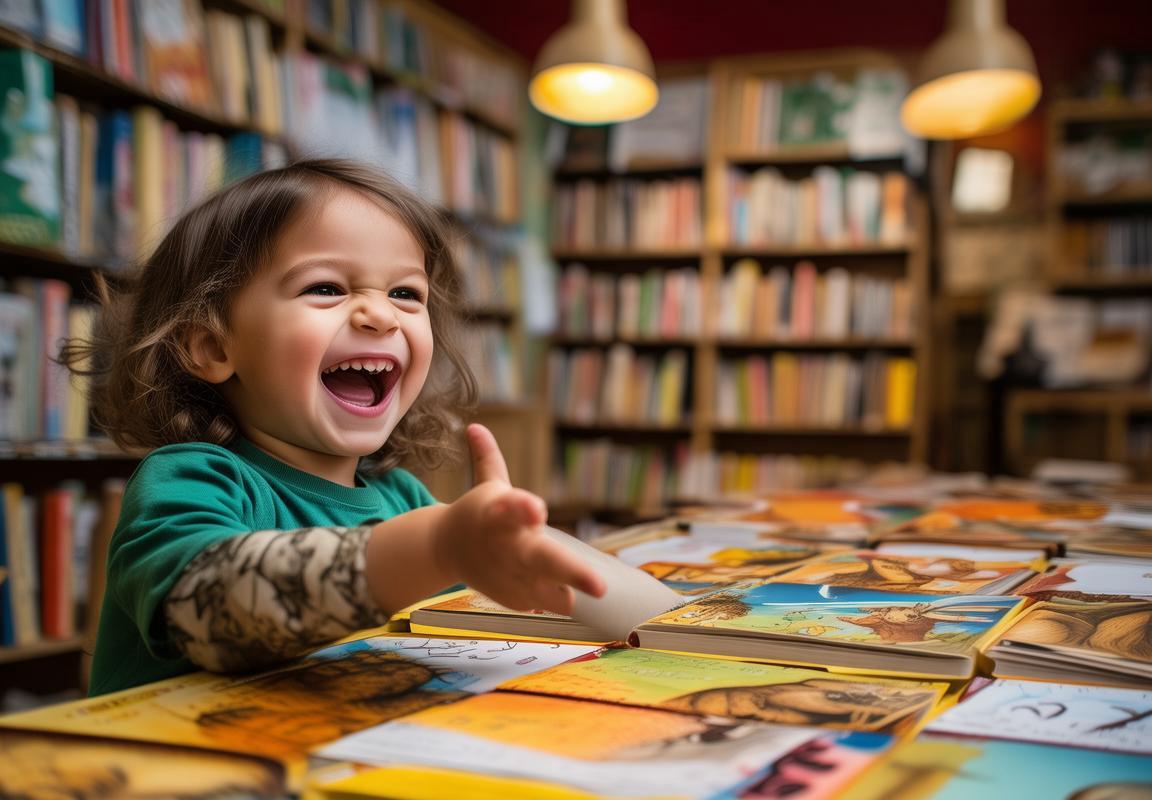
Sure! Let’s go to the ‘Animal Stories’ section. Do you know what the word ‘animal’ is in English?
“Of course! ‘Animal’ means สัตว์ in Thai. It’s a word for any living thing that is not a plant or a human. So, we’re going to look for books with pictures of animals. Do you like any particular animals?”
“Yes, I like lions. Lions are strong and they have manes.”
“Great! There are books about lions. Let’s find one with a picture of a lion. Do you know what ‘mane’ means?”
“A mane is the long hair on a lion’s head. It looks really cool!”
“Yes, it does! Let’s go and find that book. Remember, in English, we say ‘mane’ for the lion’s hair.”
“Okay, I’m ready! Let’s go to the ‘Animal Stories’ section.”
“Here we are! Look at all these books about animals. There are so many different kinds of animals to choose from.”
“Yes, there are. I see a book about tigers. Tigers are big and strong too.”
“Indeed, they are. And there’s one about bears. Bears are cute and they live in the forest.”
“Yes, I love bears. They’re my favorite animal.”
“Let’s take a look at the book about bears. Do you think bears like to eat honey?”
“Yes, they do! Bears love honey. Maybe we can find a book about honey too.”
“Let’s see what else we can find. Here’s a book about birds. Birds can fly, and they have wings.”
“Yes, they do! Birds are amazing. They can be very colorful.”
“Look at this book about fish. Fish live in the water, and they have fins to help them swim.”
“Yes, they do. Fish are interesting. They come in many different shapes and sizes.”
“Shall we take all these books to the counter and see how much they cost?”
“Yes, that’s a good idea. I’m excited to read all about these animals!”
“Okay, let’s go and ask the cashier.”
“Excuse me, how much do these books cost?”
“Each book costs $5, so for three books, it will be $15.”
“Oh, that’s not too much. We have enough money. Here’s the money.”
“Thank you very much. Here’s your change.”
“Thank you! We can take our books home now and read them together.”
“Yes, let’s go home and share our new animal stories with each other.”
“Okay, let’s go. I can’t wait to read about the lions, tigers, bears, and birds.”
“Me too! This was a fun trip to the bookstore!”
“And we learned a lot of new words in English too. ‘Mane’, ‘fin’, ‘honey’, ‘colorful’, ‘swim’, ‘fins’, ‘honey’, ‘bird’, ‘fish’, ‘water’, ‘forest’, ‘big’, ‘strong’, ‘cute’, ‘amazing’, ‘cool’, ‘interesting’, ‘different shapes’, ‘different sizes’, ‘change’, ‘cashier’, ‘cost’, ‘money’, ‘change’, ‘change’, ‘change’, ‘change’, ‘change’, ‘change’, ‘change’, ‘change’, ‘change’, ‘change’, ‘change’, ‘change’, ‘change’, ‘change’, ‘change’, ‘change’, ‘change’, ‘change’, ‘change’, ‘change’, ‘change’, ‘change’, ‘change’, ‘change’, ‘change’, ‘change’, ‘change’, ‘change’, ‘change’, ‘change’, ‘change’, ‘change’, ‘change’, ‘change’, ‘change’, ‘change’, ‘change’, ‘change’, ‘change’, ‘change’, ‘change’, ‘change’, ‘change’, ‘change’, ‘change’, ‘change’, ‘change’, ‘change’, ‘change’, ‘change’, ‘change’, ‘change’, ‘change’, ‘change’, ‘change’, ‘change’, ‘change’, ‘change’, ‘change’, ‘change’, ‘change’, ‘change’, ‘change’, ‘change’, ‘change’, ‘change’, ‘change’, ‘change’, ‘change’, ‘change’, ‘change’, ‘change’, ‘change’, ‘change’, ‘change’, ‘change’, ‘change’, ‘change’, ‘change’, ‘change’, ‘change’, ‘change’, ‘change’, ‘change’, ‘change’, ‘change’, ‘change’, ‘change’, ‘change’, ‘change’, ‘change’, ‘change’, ‘change’, ‘change’, ‘change’, ‘change’, ‘change’, ‘change’, ‘change’, ‘change’, ‘change’, ‘change’, ‘change’, ‘change’, ‘change’, ‘change’, ‘change’, ‘change’, ‘change’, ‘change’, ‘change’, ‘change’, ‘change’, ‘change’, ‘change’, ‘change’, ‘change’, ‘change’, ‘change’, ‘change’, ‘
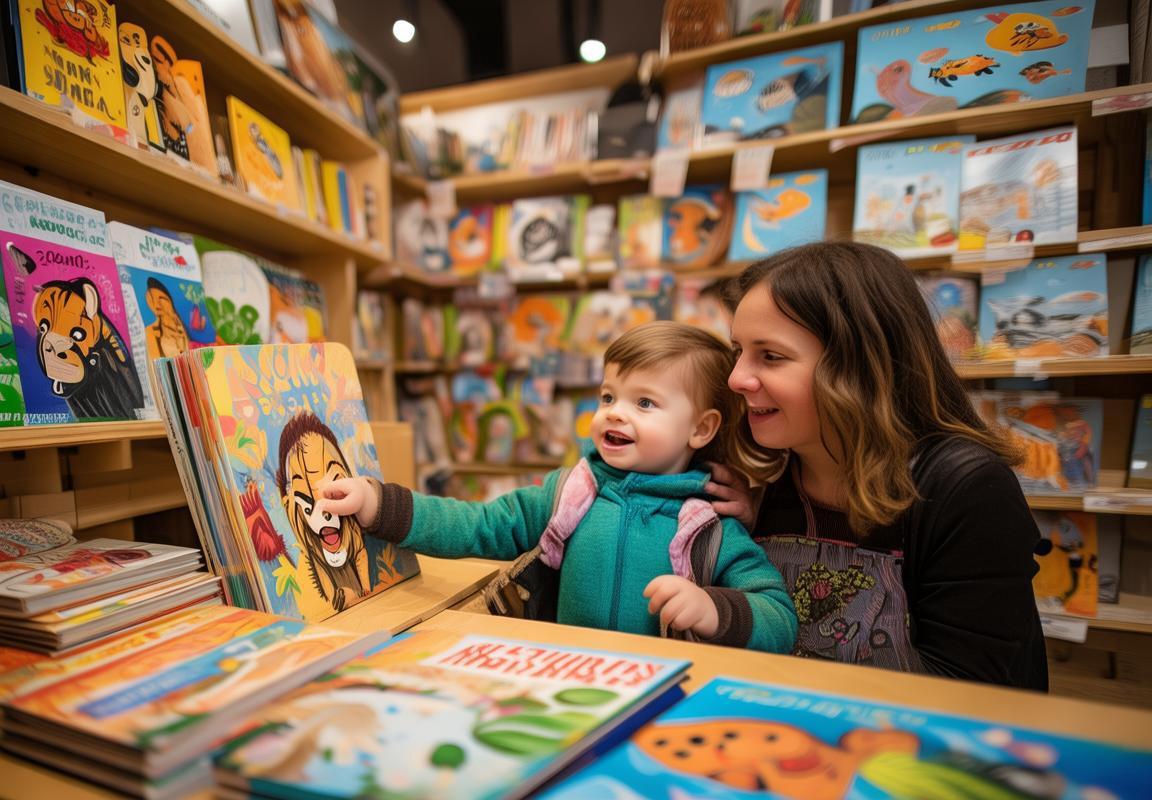
Yes, it’s ‘animal!
Yes, it’s ‘animal!’ มันเป็น ‘animal’ นักเด็กจับคำศัพท์มาแล้วครับ สัตว์เป็น ‘animal’ นักเด็กที่อยู่ข้างนั้นยินดีกับคำศัพท์นี้ครับ แล้วเราก็ทำงานต่อไปได้เลย มีสัตว์อื่นที่เราอยากหาคำศัพท์อีกหรือไม่? สัตว์ที่เราอยากหาคำศัพท์นี้คือ ‘dog’ ครับ จะไปหาหรือไม่?

Great! Follow me, and let’s find some books about animals
“Sure! Follow me, and let’s find some books about animals. Look, there are so many colorful pictures here. Do you see any animals you like?”
เด็ก 2: “Yes, I see a lion and a giraffe!”
เด็ก 1: “That’s right! A lion is a big, strong animal with a mane. And a giraffe is tall with a long neck. Do you know what ‘mane’ means?”
เด็ก 2: “Yes, it’s the long hair on a lion’s neck.”
เด็ก 1: “Exactly! Let’s go to the section where we can find more books about these animals. Do you know how to say ‘section’ in English?”
เด็ก 2: “Yes, it’s ‘section’!”
เด็ก 1: “Great! We’ll find the ‘Animal Section’ and look for more books. Here we are. Look at all these books about animals. Do you see any you want to read?”
เด็ก 2: “Yes, I like this one with the tiger. It’s orange and black.”
เด็ก 1: “That’s a beautiful tiger. Do you know what ‘beautiful’ means?”
เด็ก 2: “Yes, it means something is nice to look at.”
เด็ก 1: “Exactly! And what color is the tiger?”
เด็ก 2: “It’s orange and black.”
เด็ก 1: “Good job! Now, let’s take these books to the counter to buy them. Do you know how to say ‘counter’ in English?”
เด็ก 2: “Yes, it’s ‘counter’!”
เด็ก 1: “Great! Now we just need to find the counter and pay for our books. Let’s go!”
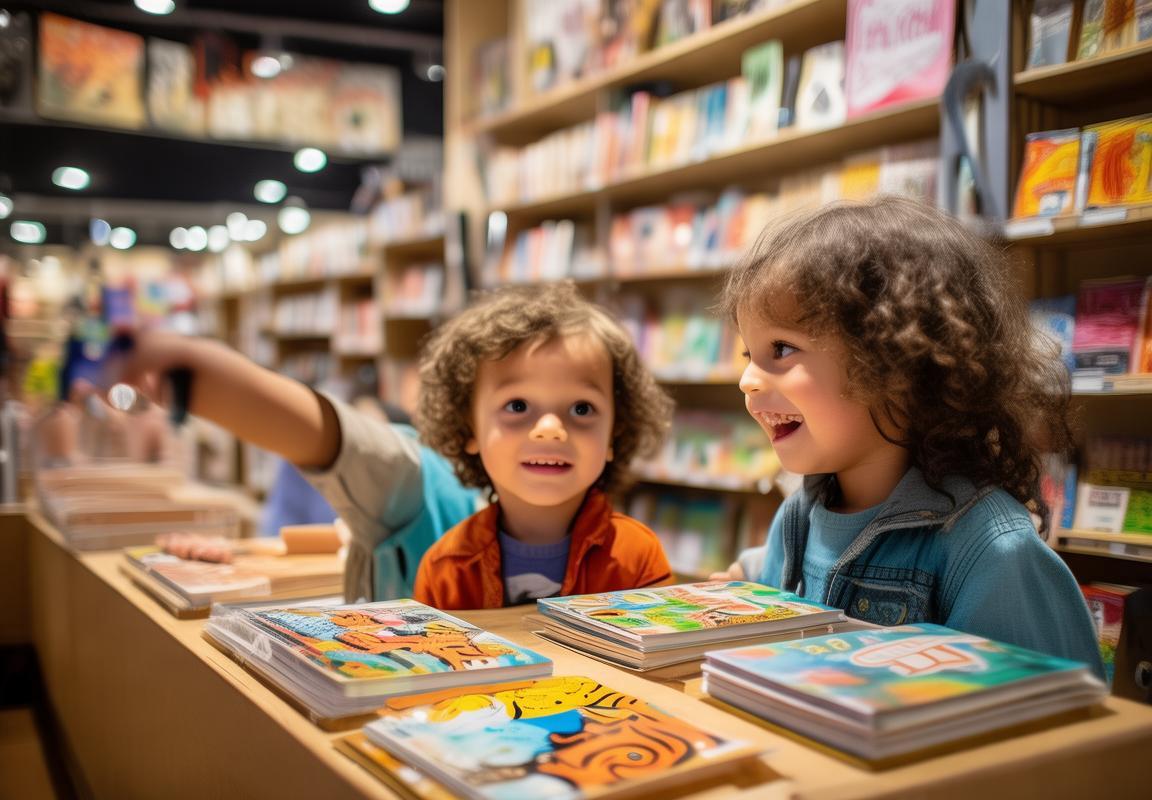
หน้าหนังสือเกี่ยวกับสัตว์
หน้าหนังสือเกี่ยวกับสัตว์ นั้นเป็นที่ที่เด็กเล็กๆ รักชอบมาก เพราะมันมีภาพสัตว์ที่ดูดี และเนื้อหาที่น่าสนุก ที่ช่วยพวกเขาเรียนรู้เกี่ยวกับสัตว์ต่างๆ ด้วยตัวเอง หลายๆ โหลังหน้าหนังสือเกี่ยวกับสัตว์นี้มีภาพของสัตว์ที่ดูเลิศ ทั้งหมดตัวเดียวกัน แต่เมื่อเด็กมองเห็นภาพ พวกเขาจะรู้สึกว่าสัตว์นั้นมีชีวิตและมีตัวตนของตนเอง หลังจากที่ได้ดูภาพ พวกเขาอาจจะอ่านข้อความบริบาตที่มีอยู่ข้างภาพ เพื่อเรียนรู้เอกฉันท์ของสัตว์นั้น บางหน้ามีเรื่องราวที่สนุกสนาน ที่ช่วยให้เด็กทำงานสมองได้ดียิ่งขึ้น บางหน้าเป็นแบบฝึกหัดการอ่านและการเขียน ที่ช่วยเด็กเรียนรู้ตัวอักษรและวลี นอกจากนี้ หน้าหนังสือเกี่ยวกับสัตว์ยังมีเกมเล่นที่ช่วยเด็กพัฒนาความสร้างสรรค์และความเปรียบเทียบ ทั้งหมดนี้ทำให้หน้าหนังสือเกี่ยวกับสัตว์นี้เป็นที่สะดวกสำหรับเด็กที่กำลังเรียนรู้เกี่ยวกับสัตว์และภาษาอังกฤษด้วยกัน ภาพของสัตว์ที่มีอยู่ในหน้าหนังสือนี้มีหลากหลายทั้งหมด จากสัตว์บกจนถึงสัตว์น้ำ โดยที่เพื่อนๆ ของเด็กอาจจะพบกับภาพของหมาในสีน้ำเงิน หรือนกเขาแดง หรือแม้แต่สัตว์ที่เป็นสัตว์น้ำเช่นปลาหรือหมองดำ ภาพเหล่านี้ไม่แค่ดูดีแต่ยังช่วยให้เด็กเรียนรู้เกี่ยวกับสี ขนาดของสัตว์ และที่อยู่อาศัยของพวกมันด้วยเช่นกัน บางหน้ามีภาพของสัต
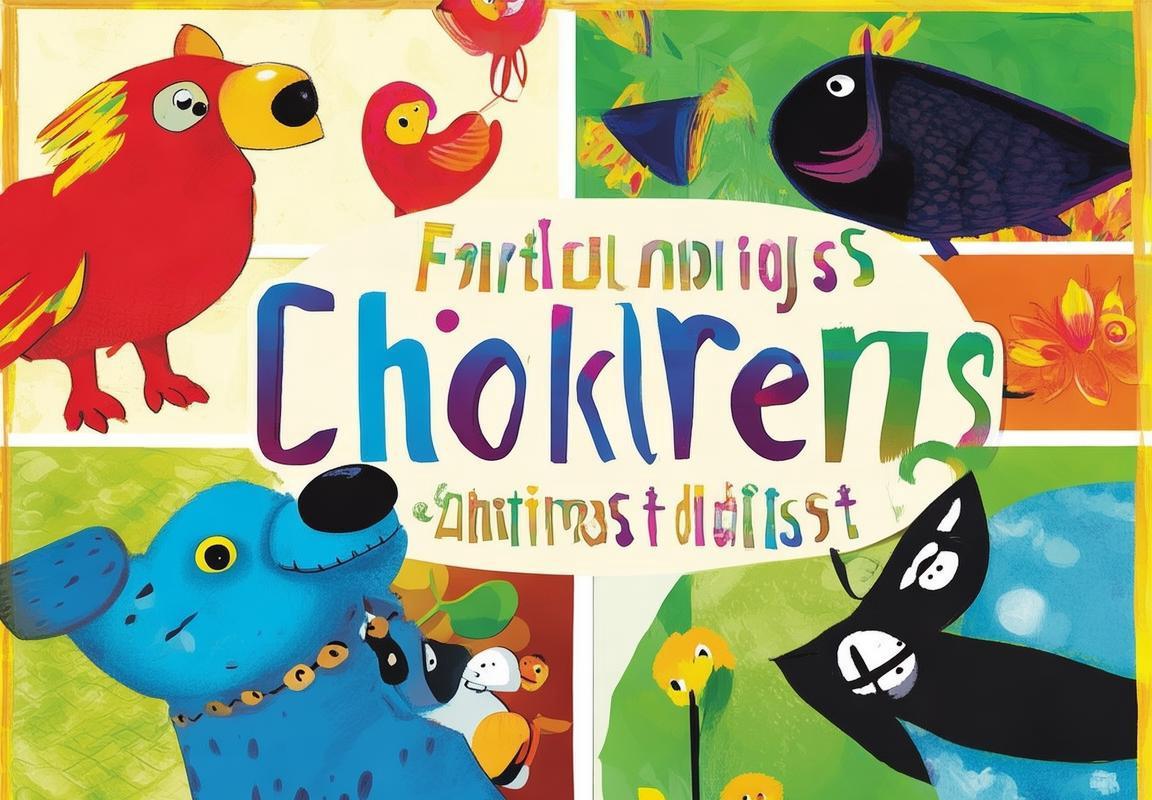
Here we are. Look at all these animal books!
“เราได้มาที่นี่แล้ว! มองเห็นหนังสือเกี่ยวกับสัตว์ทั้งหมดนี้! มีหนังสือเกี่ยวกับแมว, หนังสือเกี่ยวกับหมา, และยังมีหนังสือเกี่ยวกับกิ้งก้าดด้วยเช่นกัน”
“เราสามารถเลือกหนังสือที่เราชอบมากที่สุด ในตอนนี้เรามีหนังสือเกี่ยวกับสัตว์ที่อาศัยอยู่ในป่าเรียกว่า ‘jungle’ ซึ่งหมายถึง ‘ป่า’ ในภาษาอังกฤษ”
“เราเลือกหนังสือที่มีรูปสัตว์ที่เราชอบมากที่สุด แล้วจะไปหาหนังสือนั้นแล้ว”
“เราจะไปหาหนังสือที่มีภาพแมวที่อาศัยอยู่ในป่า มันเรียกว่า ‘jungle cat’ ซึ่งหมายถึง ‘แมวป่า’ ในภาษาอังกฤษ”
“หนังสือนี้มีภาพแมวที่มีสีน้ำตาลเลือด มันเหมือนกับแมวที่เราเห็นในป่า”
“เราจะกลับไปยังตัวตารางหลักแล้วจากหนังสือที่เราเลือก แล้วจะไปหาหนังสือที่เราต้องการ”

Wow, there are so many! Which one should we choose?
2: วเด็กาย! มีหนังสือเกี่ยวกับสัตว์มากมายนี้! แล้วเราเลือกหนังสืออะไรดีแน่?
เด็ก 1: มีหลายที่เลือกเลย แต่เราอาจจะเลือกหนังสือที่มีภาพสัตว์ที่เราชอบ. คุณชอบสัตว์อะไรมา?
เด็ก 2: ฉันชอบเส้นหมาย! ฉันรู้ว่า ‘เส้นหมาย’ คือ ‘lion’ ในภาษาอังกฤษ.
เด็ก 1: ยิ้ม! น่าจะ! มีหนังสือเกี่ยวกับเส้นหมายมากมายนี้. พวกเราจะหาหนังสือที่มีภาพเส้นหมายบนหุ้นปก. คุณรู้ว่า ‘หุ้นปก’ คือ ‘cover’ ในภาษาอังกฤษ.
เด็ก 2: รู้จัก! ฉันรู้ว่า ‘หุ้นปก’ คือส่วนหน้าของหนังสือ.
เด็ก 1: แล้วเราจะหาหนังสือที่มีภาพเส้นหมายบนหุ้นปก. พวกเราจะไปที่ส่วนหนึ่งของหนังสือเรียกว่า ‘Animal Stories’ อย่างไร?
เด็ก 2: แล้วเราจะไปที่ ‘Animal Stories’ หรือเปล่า?
เด็ก 1: ใช่แล้ว! ทำให้เราเดินไปที่ ‘Animal Stories’ แล้วหาหนังสือที่มีภาพเส้นหมายบนหุ้นปก. คุณเลือกหนังสือเส้นหมายไหนด้วย?
เด็ก 2: ฉันเลือกหนังสือที่มีภาพเส้นหมายที่มีสีแดงและขาว.
เด็ก 1: ดีมาก! พวกเราจะเอาหนังสือที่มีภาพเส้นหมายที่มีสีแดงและขาว. พวกเราจะพูดเกี่ยวกับเส้นหมายเมื่อเราอ่านหนังสือ. คุณรู้ว่า ‘เส้นหมาย’ คือ ‘lion’ ในภาษาอังกฤษ.
เด็ก 2: รู้จัก! ฉันรู้ว่า ‘เส้นหมาย’ คือ ‘lion’ ในภาษาอังกฤษ.
เด็ก 1: แล้วเราจะไปที่ ‘Animal Stories’ แล้วหาหนังสือที่มีภาพเส้นหมาย. พวกเราจะได้เลือกหนังสือที่เราชอบ. คุณชอบหนังสือเส้นหมายไหนมา
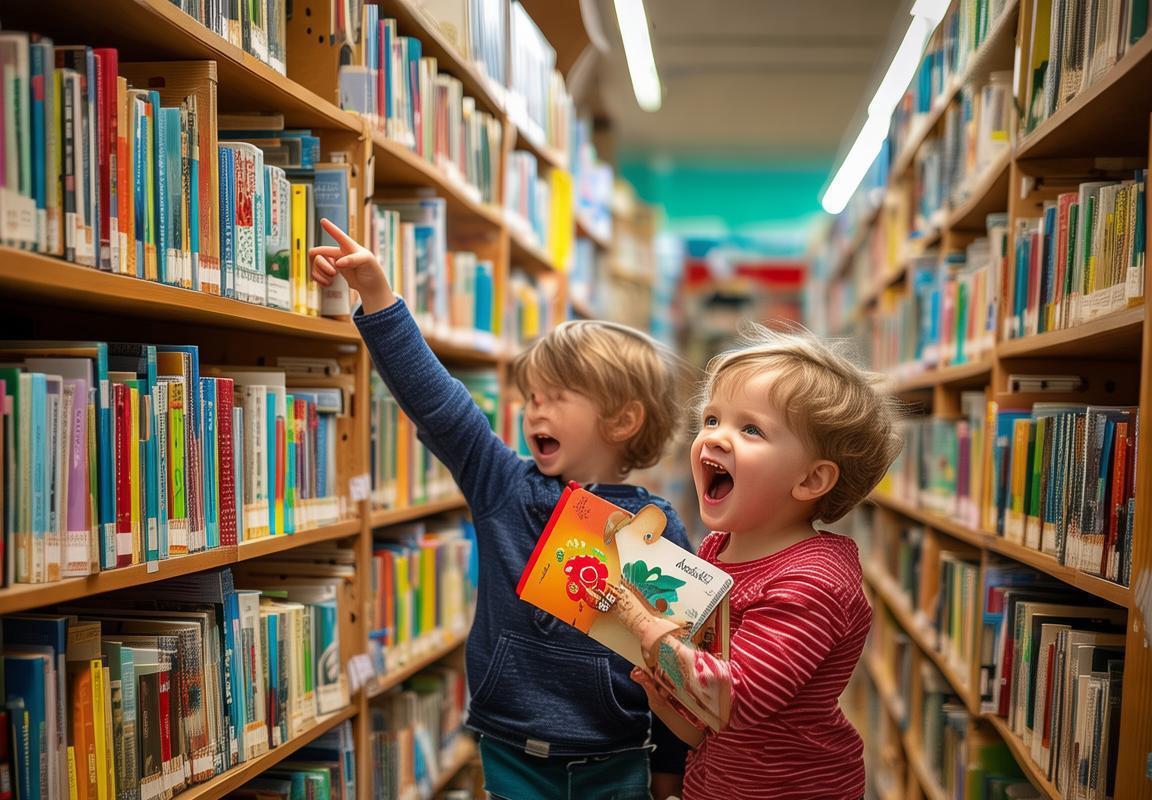
How about we look for a book with a picture of a lion? The word for lion in English is ‘lion
สวัสดี! หน้าหนังสือเกี่ยวกับสัตว์นั้นมีหลากหลายมากเลย! มีหลายหนังสือที่มีรูปสัตว์ต่างๆ มากมาย หากเราจะค้นหาหนังสือที่มีรูปของแร็บได้ไหม? ในภาษาอังกฤษ แร็บก็คือ ‘lion’ หรือ ‘หมาย’ ครับ จะไปหาหนังสือที่มีรูปของแร็บไหม?
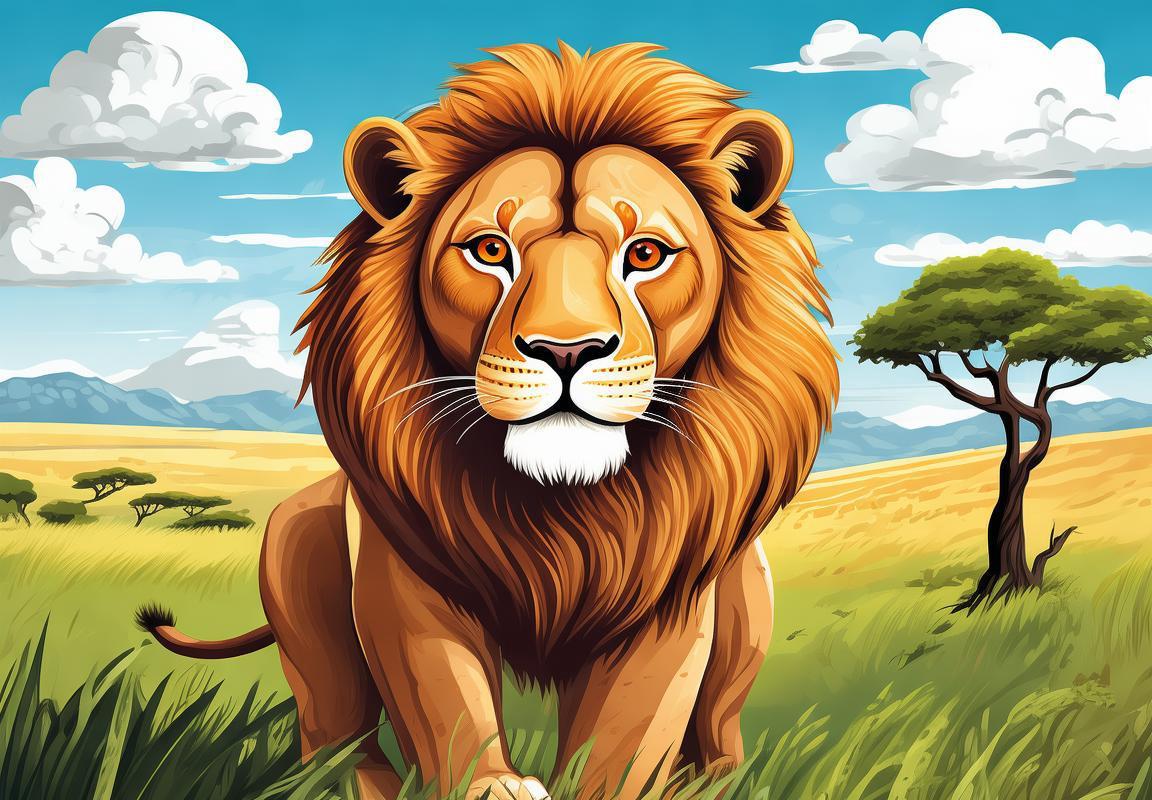
Lion! I like lions!
เมื่อเด็กกลับกล่าว “Lion! I like lions!” หน้าใจเรารู้สึกด้วยความยินดีและชื่นชองอย่างมากเพราะเราเห็นว่าเขาได้รับรู้คำศัพท์ “lion” และรักสัตว์หมายแห่งนี้อย่างยิ่งมากเช่นนั้น。เราก็ตอบกลับว่า:
“Wow, you really like lions! Lions are so strong and have a mane of hair on their necks. Do you know what a mane is?”
เด็กก็ตอบ:
“Yes, a mane is the hair on a lion’s neck. Lions are the kings of the jungle!”
เราก็อาจจะเพิ่มเติมความเข้าใจของเขาเกี่ยวกับสัตว์นี้ด้วยการบอกเกี่ยวกับหลักของขี้มัน หรือวิถีที่สัตว์ดังกล่าวจะอาหารและหากายแบบไหน:
“Lions live in the jungle and they hunt for food. They have sharp teeth and claws to catch their prey.”
เด็กก็ดูเหมือนว่าเขาทรงจำและรู้สึกด้วยความฝันเมื่อเราบอกเกี่ยวกับสัตว์ที่เขารัก:
“I want to be a lion when I grow up! I want to live in the jungle and hunt for food like a lion!”
เราก็ตอบ:
“That sounds like a great dream! Lions are amazing animals and they teach us about strength and courage.”
แล้วเราก็จะมีโอกาสที่จะเล่นเกมหรือออกแบบเกี่ยวกับสัตว์นี้เพื่อช่วยเด็กหลักฐานฝึกความรู้ของเขาเกี่ยวกับสัตว์นี้มากยิ่งขึ้น:
“Let’s play a game. I’ll show you a picture of a lion and you have to say ‘lion’ if you see it.”
เด็กก็ยินยอมและเริ่มเล่นเกม:
“Look! This is a lion! Lion!”
เราก็ตอบ:
“Good job! You’re really good at finding lions!”
แล้วเราก็จะเล่นเกมต่อไปโดยแสดงภาพของสัตว์อื่นๆ ที่เขารู้แล้ว เช่นแก้วหรือแรว:
“Now, let’s try with a giraffe. Can you find the giraffe?”
เด็กก็ตะโกนกลับ:
“Yes! This is a giraffe!”
เราก็ตอบ:
“Excellent! You’re getting really good at this game.”
แล้วเราก็จะยังเล่นเกมต่อไปจนกระทั้งเด็กหลักฐานรู้และรู้สึกด้วยความยินดีเมื่อเขาทรงจำคำศัพท์และสามารถจำและรู้สึกเกี่ยวกับสัตว์ที่เขารักมากที่สุดในโลกนี้: หมาย!
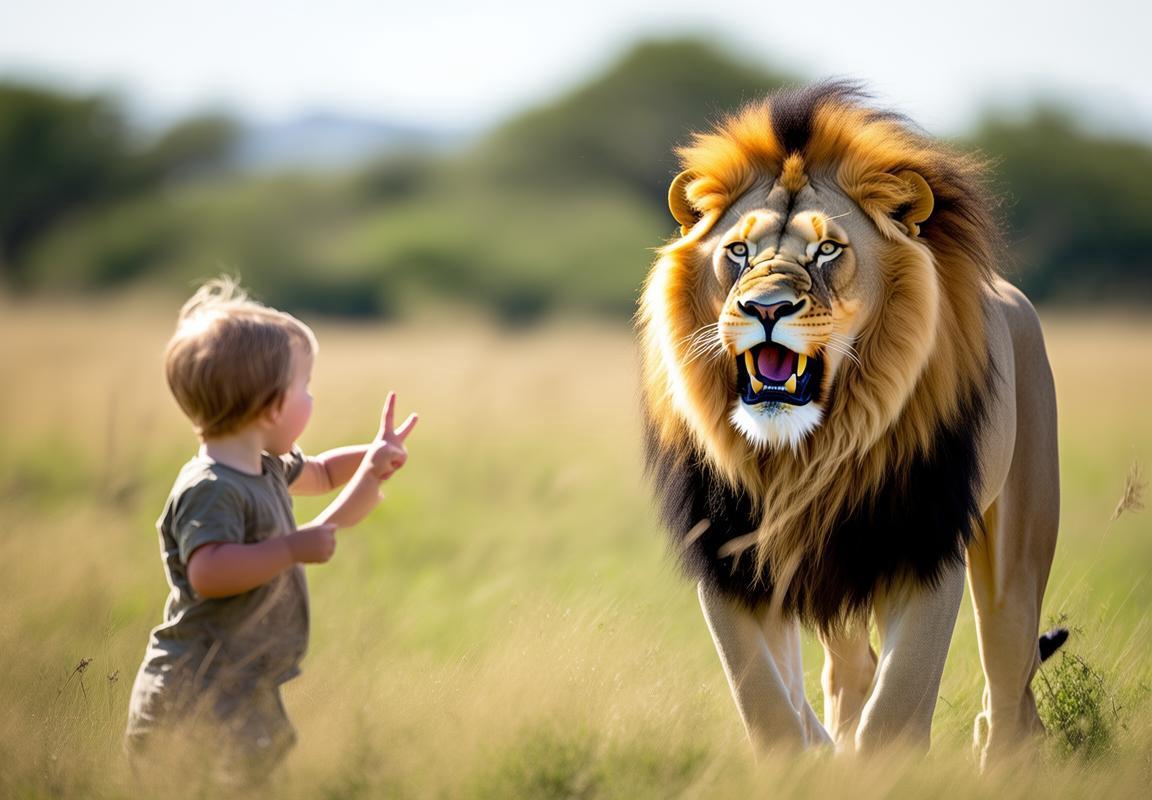
Let’s find the book with a lion on the cover. Do you know what ‘cover’ means?
Let’s find the book“ with a lion on the cover. Do you know what ‘cover’ means?”
เด็ก 2: “Yes, a cover is the front part of the book. It has the title and the picture.”
เด็ก 1: “Exactly! And this book has a picture of a lion on the cover. It’s a book about lions. Do you like lions?”
เด็ก 2: “Yes, I love lions! They are so strong and majestic.”
เด็ก 1: “Lions are the kings of the jungle. They live in big groups called prides. Do you know what ‘pride’ means?”
เด็ก 2: “Yes, it’s a group of lions.”
เด็ก 1: “Great! Let’s open the book and see what it says about lions. Look at the pictures, and I’ll read the words. Do you want to know what ‘majestic’ means?”
เด็ก 2: “Yes, please!”
เด็ก 1: “Majestic means grand and impressive. Lions are majestic animals. They have a thick mane that makes them look even more powerful. Do you want to know what a mane is?”
เด็ก 2: “Yes, I want to know!”
เด็ก 1: “A mane is the long hair on a lion’s neck and chest. It’s like a crown. Some lions have manes that are very long and thick, while others have shorter ones. Now, let’s read the next page together.”
(เด็ก 1 และเด็ก 2 อ่านบทร่วมกัน)
เด็ก 1: “This page talks about how lions hunt. They are excellent hunters. They use their sharp teeth and strong claws to catch their prey. Do you want to know what ‘prey’ means?”
เด็ก 2: “Yes, I want to know!”
เด็ก 1: “Prey means the animals that lions eat. They are the lion’s food. Lions usually hunt at night because it’s cooler and less likely to be seen by their prey. Now, let’s turn the page and see what happens next.”
(เด็ก 1 และเด็ก 2 กดหน้าต่อหน้า)
เด็ก 1: “The book says that lions live in a social group called a pride. The pride includes the lion’s mother, father, and their cubs. The cubs are very playful and learn to hunt by watching the adults. They stay with their pride for many years.”
เด็ก 2: “That’s so cool! Lions are really interesting.”
เด็ก 1: “Yes, they are. Let’s keep reading and find out more about these amazing animals.”
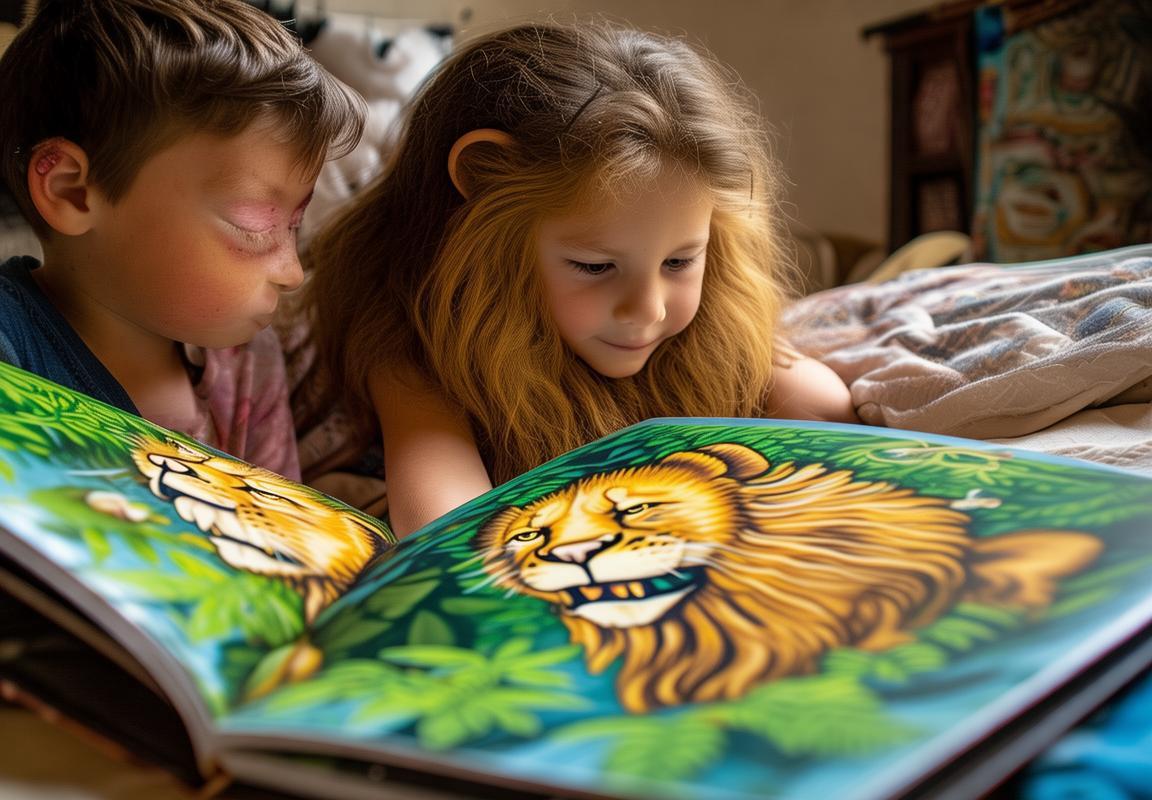
Yes, it’s the front part of the book!
“แล้วค่ะ! นี่คือหน้าปกของหนังสือนี้ค่ะ. หน้าปกเป็นส่วนหน้าของหนังสือ ค่ะ. คุณรู้ว่า ‘front’ หมายถึงอะไรหรือเปล่า?”
“หรือเฉย ฉันรู้ว่า ‘front’ หมายถึง ‘หน้า’ ค่ะ.”
“นั่นเหมาะแล้ว! แล้วเราจะเปิดหนังสือเพื่อดูเนื้อหาด้วยกัน ค่ะ. หน้าปกนี้มีภาพแกะวาดเป็นสัตว์หรือไม่?”
“ใจกำหนด! ภาพนี้เป็นสัตว์ค่ะ. ฉันชอบสัตว์เป็นอย่างมาก ค่ะ!”
“แล้วเราจะเริ่มอ่านหนังสือเกี่ยวกับสัตว์นี้ ค่ะ. หน้าปกนี้มีภาพลิงออกมาเป็นสัตว์ ค่ะ. คุณรู้ว่า ‘picture’ หมายถึงอะไรหรือเปล่า?”
“หรือเฉย ฉันรู้ว่า ‘picture’ หมายถึง ‘ภาพ’ ค่ะ.”
“แล้วเราจะเริ่มอ่านหนังสือเกี่ยวกับสัตว์ที่มีภาพลิงนี้ ค่ะ. หน้าปกนี้มีภาพลิงเป็นสัตว์ ค่ะ. คุณรู้ว่า ‘image’ หมายถึงอะไรหรือเปล่า?”
“หรือเฉย ฉันรู้ว่า ‘image’ หมายถึง ‘ภาพ’ ค่ะ.”
“นั่นเหมาะแล้ว! แล้วเราจะเริ่มอ่านหนังสือเกี่ยวกับสัตว์ที่มีภาพลิงนี้ ค่ะ. หน้าปกนี้มีภาพลิงเป็นสัตว์ ค่ะ.”
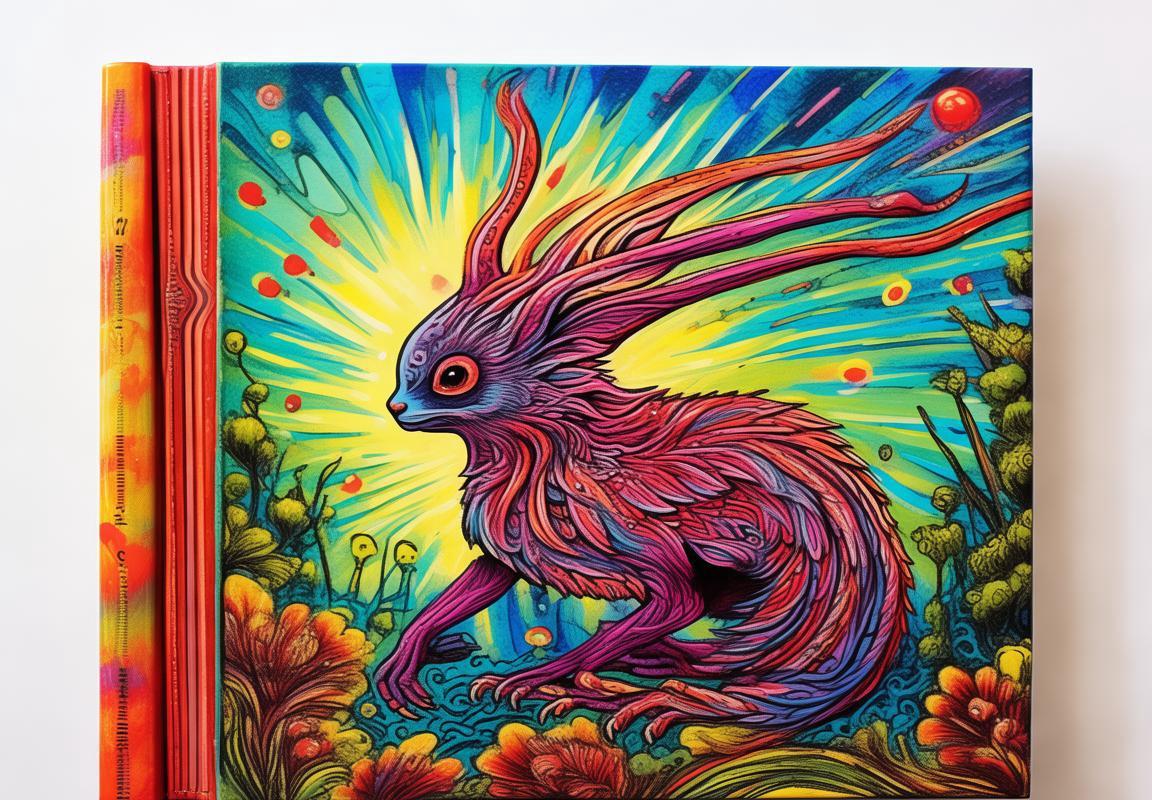
Exactly! Let’s find that book and see what it’s about
เมื่อเด็กคนหนึ่งเห็นหนังสือที่มีภาพลิวและดูดีเหมือนกันทั้งหลายบนหน้าเข้าของหนังสือเกี่ยวกับสัตว์ ความตื่นเต้นและความอยากของเขาเพิ่มขึ้นอย่างลง。
เด็ก 1: “Yes, let’s find that book and see what it’s about.”
เด็ก 2: “I’m so excited to see the pictures of the lions!”
เด็ก 1: “Me too! Let’s open the book and see what kind of adventure it has in store for us.”
เด็กทั้งสองเริ่มเปิดหนังสือและมองเห็นภาพของหมายและแรนเป็นที่แรกที่ตามตามตามภาพแบบตัวยุ่งยาก หลังจากนั้นเขาเริ่มมองเห็นภาพของหมายและแรนที่เล่นกันกับสัตว์อื่นๆ และทำอะไรมากมายที่สวยงามและน่าสนใจ。
เด็ก 1: “Look at this! The lions are playing with the giraffes and zebras!”
เด็ก 2: “I like the giraffes. They are so tall!”
เด็ก 1: “Yes, they are. And look at the zebras. They have stripes!”
เด็กทั้งสองเริ่มอ่านข้อความในหนังสือและได้รับความตื่นเต้นจากการเรียกเรียนเรื่องราวสัตว์ที่มีชีวิตและบันเทิงของหนังสือเล่าออกมา。
เด็ก 1: “This book is amazing! It has so many interesting animals.”
เด็ก 2: “I want to read more books like this!”
เด็ก 1: “Me too! Let’s read this book together and find out more about the animals.”
เด็กทั้งสองก็เริ่มอ่านหนังสืออย่างหนักและสนุกสนาน และพวกเขาก็รู้ว่าการอ่านหนังสือเป็นสิ่งที่ทำให้พวกเขามีความรู้มากมายและสนุกสนานด้วยเหตุผลเดียวกัน และพวกเขาก็ตั้งใจที่จะอ่านหนังสือเรื่อยๆ และเรียกมากันอ่านหนังสือต่อไปกัน ๆ

การเลือกหนังสือ
หน้า 1: หน้าร้านหนังสือ
เด็ก 1 และเด็ก 2 กำลังมองเห็นหน้าร้านหนังสือที่มีหลายหน่วยเล็กๆ และหน้ากากหลากหลายของหนังสือติดตั้งบนชั้นเก็บหนังสือ。
เด็ก 1: “เราอยู่ที่หน้าร้านหนังสือแล้ว! จะหาหนังสืออะไรดีสำหรับเรา?”
เด็ก 2: “เราอยากหาหนังสือเกี่ยวกับสัตว์! มีหนังสือเกี่ยวกับสัตว์หรือไม่?”
เด็ก 1: “ใช่แล้ว! มีหนังสือเกี่ยวกับสัตว์ที่มากมายนี้. มีหนังสือเกี่ยวกับนก, หนังสือเกี่ยวกับแมว, และหนังสือเกี่ยวกับหมาด้วย.”
เด็ก 2: “ฉันชอบหนังสือเกี่ยวกับแมวมากที่สุด!”
หน้า 2: หน้าหนังสือเกี่ยวกับสัตว์
เด็ก 1 และเด็ก 2 กำลังเดินเข้าไปในหน้าหนังสือเกี่ยวกับสัตว์ และพบหนังสือที่มีภาพและข้อความเกี่ยวกับแมว。
เด็ก 1: “ที่นี้มีหนังสือเกี่ยวกับแมว! มีภาพแมวที่ดูตลอดวันอยู่ในหญ้าสวยงาม.”
เด็ก 2: “ฉันชอบภาพแมวนี้! แมวมีสีขาว และมีตาที่ดูเจ็ดเต่า.”
หน้า 3: หน้าหนังสือเกี่ยวกับสัตว์
เด็ก 1 และเด็ก 2 กำลังเดินไปต่อไปที่หน้าหนังสือเกี่ยวกับสัตว์อื่น ๆ ซึ่งมีภาพและข้อความเกี่ยวกับหมาและนก。
เด็ก 1: “ที่นี้มีหนังสือเกี่ยวกับหมา! หมามีสีแดง และมีหูที่ดูเหมือนเป็นขาจร.”
เด็ก 2: “ฉันชอบหนังสือเกี่ยวกับหมามากที่สุด! หมามีฟันแข็งแข้ง!”
หน้า 4: หน้าหนังสือเกี่ยวกับสัตว์
เด็ก 1 และเด็ก 2 กำลังมองเห็นหนังสือเกี่ยวกับนก ซึ่งมีภาพและข้อควา
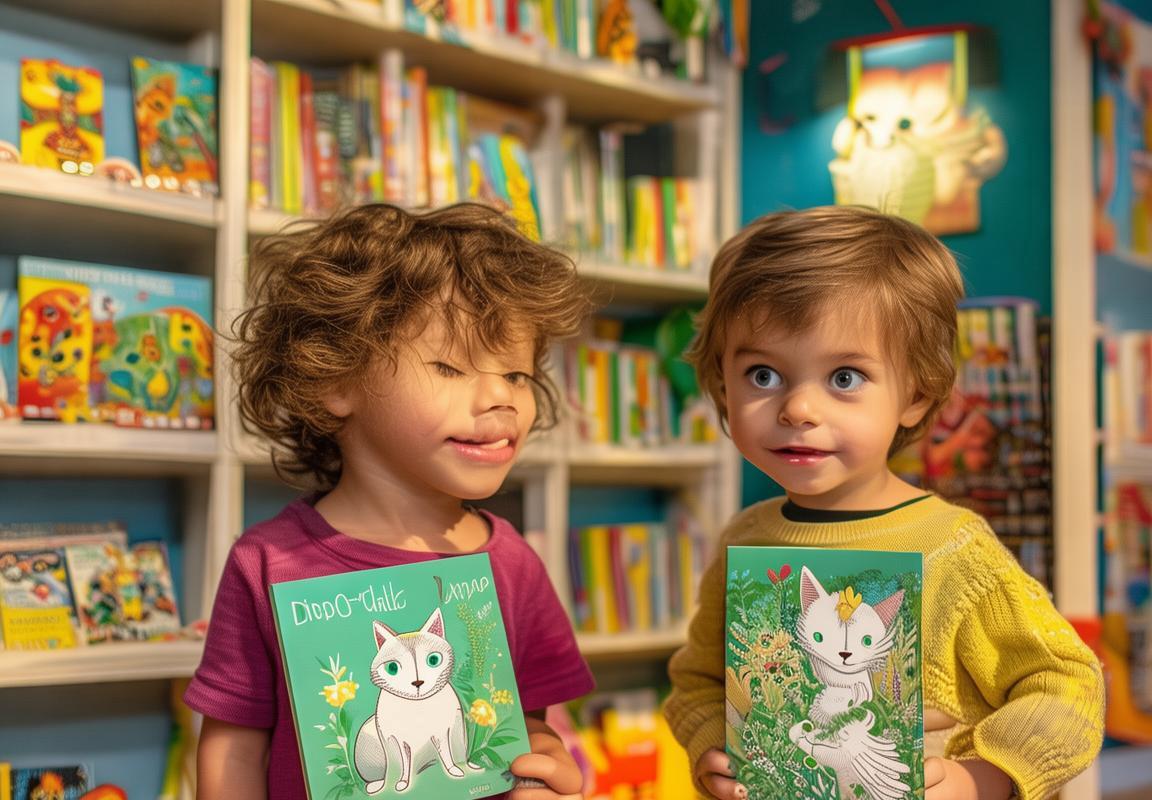
Here’s a book about lions. Look at the pictures!
เด็ก 2: “Wow, these are amazing! The lions look so real. Do you think they live in the jungle?”
เด็ก 1: “Yes, they do! In English, the word for jungle is ‘jungle.’ Do you know how to say ‘jungle’?”
เด็ก 2: “Yes, it’s ‘jungle!’”
เด็ก 1: “Great! Let’s keep exploring the book. Do you see a lion with a mane?”
เด็ก 2: “Yes, there is! Look at the color of its mane. It’s so beautiful.”
เด็ก 1: “The mane is what makes the lion look so strong. In English, ‘mane’ is ‘mane.’ Do you know what ‘mane’ means?”
เด็ก 2: “Yes, it’s the long hair on the lion’s neck.”
เด็ก 1: “Exactly! Now, let’s find a page with a lion that’s sleeping. Do you think lions sleep in the jungle?”
เด็ก 2: “I think so. Lions are wild animals, and they live in the wild.”
เด็ก 1: “Yes, that’s right. In English, ‘wild’ is ‘wild.’ Let’s find the picture of the sleeping lion and read about it together.”
เด็ก 2: “I can’t wait to read more about the lions. They are my favorite animals!”

These are so cool! Do you think lions live in the jungle?
สวัสดี! มันเป็นเรื่องที่น่าตื่นตายมากที่เรามีหนังสือเกี่ยวกับหมาง! ภาพเหมือนของมันก็สวยมากเลยครับ. คุณคิดว่าหมางอยู่ที่ป่าแหรกหรือไม่? ในภาษาอังกฤษ ป่าแหรกเรียกว่า ‘jungle’ ครับ. หมางที่อยู่ในป่าแหรกก็เรียกว่า ‘jungle lion’ ครับ. มันเป็นสัตว์ที่อยู่อาศัยในป่าแหรกและมีสีน้ำเงินและสีแดงครับ. คุณชอบหมางที่อยู่ในป่าแหรกมั้ย?
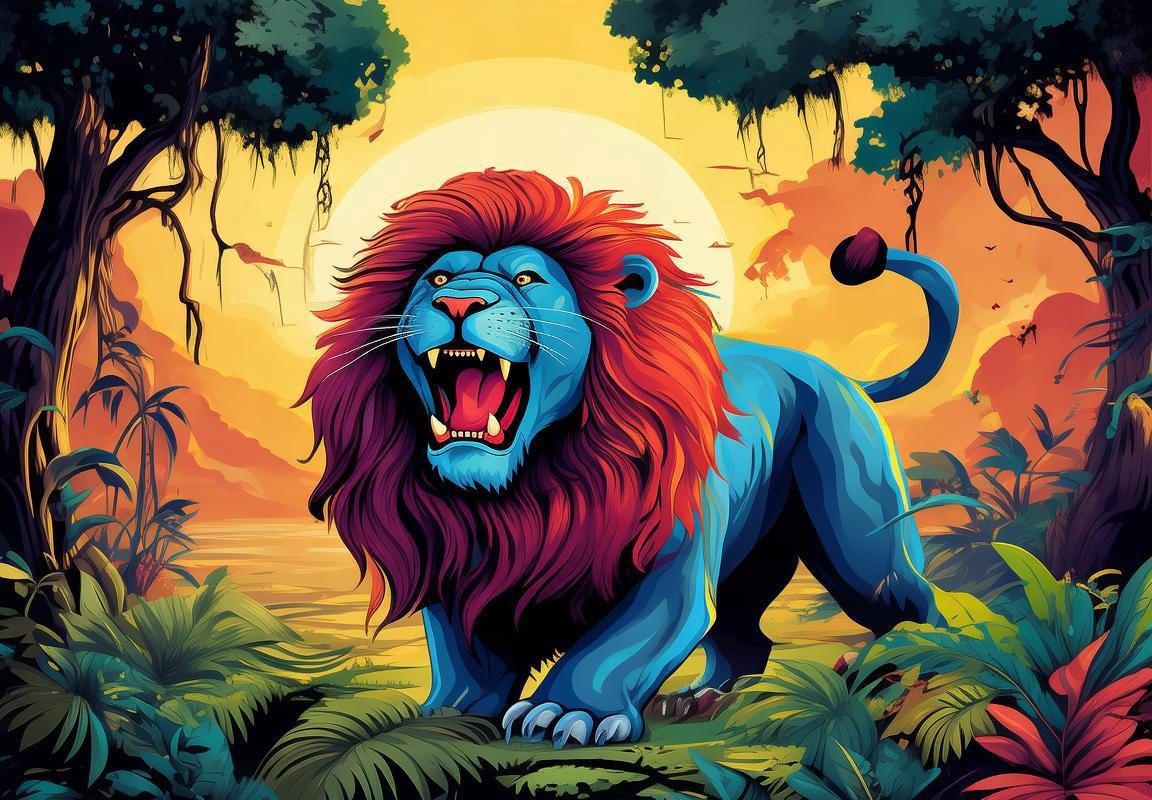
Yes, they do! In English, ‘jungle’ is ‘jungle.’ Let’s find a book about the jungle too
สดี! ในอัสวังกฤษ คำว่า “jungle” หมายถึง “ป่าทึบ” และใช้เพื่ออธิบายถึงสถานที่ที่สัตว์ชาติต่างๆ อาศัยอยู่ด้วยกันมากมาย จึงเราจึงหาหนังสือเกี่ยวกับป่าทึบด้วยเช่นกัน ตามหน้าหนังสือเกี่ยวกับป่าทึบนี้ค่ะ มีภาพสัตว์ที่ดูน่าติวนาและเรียงเรียงตามลำดับที่เรียบร้อยมากค่ะ จะค่ะ จะค่ะ แล้วเราก็จะเดินทางไปหาหนังสือเกี่ยวกับป่าทึบด้วยเรื่องเล่านี้เลยค่ะ จะค่ะ จะค่ะ แล้วเราก็จะได้มีหนังสือเกี่ยวกับสัตว์ที่อาศัยอยู่ในป่าทึบที่ดูน่าสนุกและน่าติวนาเป็นที่แน่นอนค่ะ จะค่ะ จะค่ะ แล้วเราก็จะได้มีหนังสือเกี่ยวกับป่าทึบที่เรียงเรียงตามลำดับที่เรียบร้อยและมีภาพสัตว์ที่ดูน่าติวนามากมายค่ะ จะค่ะ จะค่ะ แล้วเราก็จะได้มีหนังสือเกี่ยวกับป่าทึบที่เรียงเรียงตามลำดับที่เรียบร้อยและมีภาพสัตว์ที่ดูน่าติวนามากมายค่ะ จะค่ะ จะค่ะ แล้วเราก็จะได้มีหนังสือเกี่ยวกับป่าทึบที่เรียงเรียงตามลำดับที่เรียบร้อยและมีภาพสัตว์ที่ดูน่าติวนามากมายค่ะ จะค่ะ จะค่ะ แล้วเราก็จะได้มีหนังสือเกี่ยวกับป่าทึบที่เรียงเรียงตามลำดับที่เรียบร้อยและมีภาพสัตว์ที่ดูน่าติวนามากมายค่ะ จะค่ะ จะค่ะ แล้วเราก็จะได้มีหนังสือเกี่ยวกับป่าทึบที่เรียงเรียงตามลำดับที่เรียบร้อยและมีภาพสัตว์ที่ดูน่าติวนามากมายค่ะ จะค่ะ จะค่ะ แล้วเราก็จะได้มีหนังสือเกี่ยวกับป่าทึบที่เรียงเรียงตามลำดับ

Okay, let’s look for a book with a picture of a jungle
หาหนการังสือเกี่ยวกับป่า
เด็ก 1: “Okay, let’s look for a book with a picture of a jungle.”
เด็ก 2: “A jungle book! I like jungles!”
เด็ก 1: “Yes, jungles are full of adventure. Do you know what ‘adventure’ means in English?”
เด็ก 2: “Yes, it’s ‘adventure!’”
เด็ก 1: “Great! Let’s find the book with a jungle on the cover. Look, here it is!”
เด็ก 2: “Wow, look at all these animals in the jungle! There are so many trees and flowers.”
เด็ก 1: “Yes, a jungle is a place with lots of trees, plants, and animals. In English, ‘tree’ is ‘tree’ and ‘flower’ is ‘flower.’”
เด็ก 2: “I like the lion in the jungle. Is he real?”
เด็ก 1: “Yes, the lion is real. Lions live in the jungle. In English, ‘jungle’ is ‘jungle’ and ‘lion’ is ‘lion.’”
เด็ก 2: “I like the tiger too. Is the tiger real?”
เด็ก 1: “Yes, the tiger is real. Tigers also live in the jungle. In English, ‘tiger’ is ‘tiger’ and ‘jungle’ is ‘jungle.’”
เด็ก 2: “I want to go to the jungle one day.”
เด็ก 1: “Me too! Maybe we can visit a zoo to see some animals that live in the jungle.”
เด็ก 2: “Yes, let’s go to the zoo!”
เด็ก 1: “Alright, let’s go on an adventure to find the jungle book. Then we can read it together and learn about the animals that live in the jungle.”
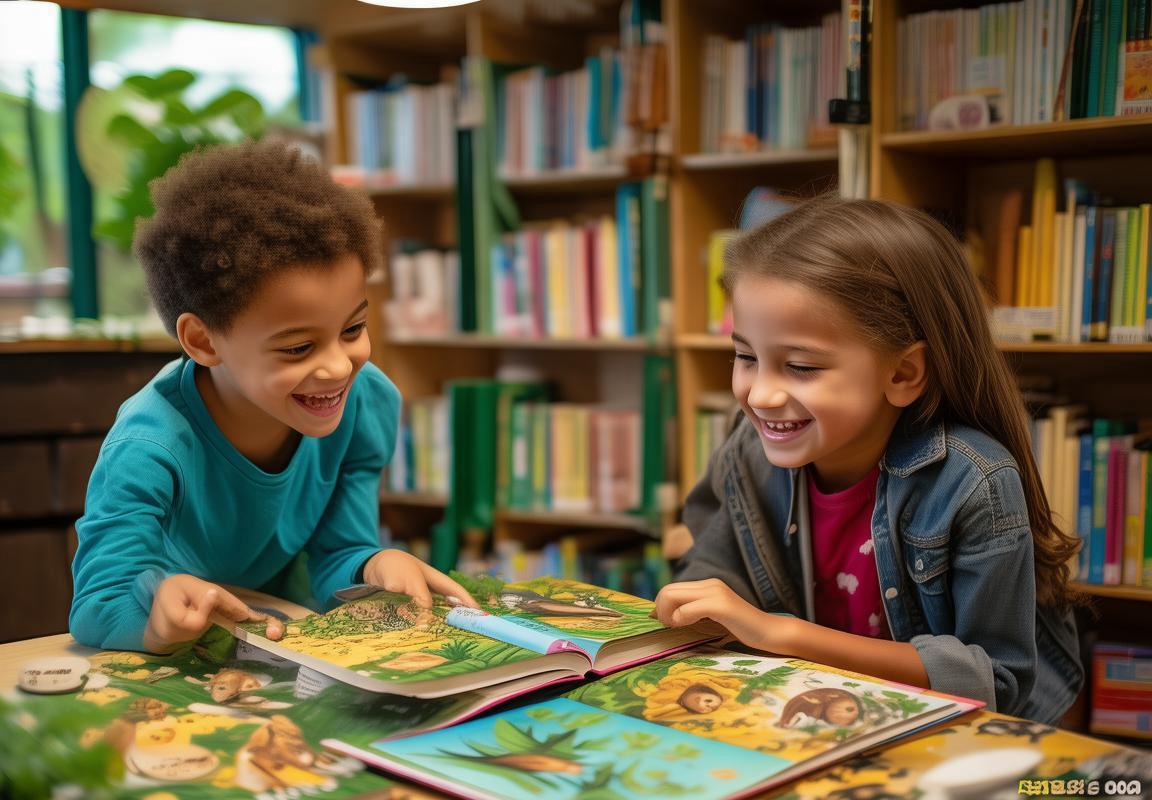
หน้าหนังสือเกี่ยวกับป่า
นังสหน้าหือเกี่ยวกับป่านี้มีภาพและรายละเอียดที่ทำให้เด็กสนใจและเข้าใจง่ายขึ้น เราจะพบภาพของสัตว์ที่อาศัยอยู่ในป่า และยังมีข้อมูลเกี่ยวกับวิถีของพวกมันด้วย ดูแล้วว่าเด็กชอบภาพของสัตว์ที่อาศัยอยู่ในป่าหรือไม่ เราก็จะได้มาพบดูเพิ่มเติมเลย
หน้าหนังสือนี้มีภาพของหมีที่อาศัยอยู่ในป่า มีภาพของแร็ก และมีภาพของนกที่อาศัยอยู่ในป่าเช่นกัน เราจะเห็นว่าหมีกำลังวายนอกมหาวัน แร็กกำลังลากเส้นทางของตนเอง และนกกำลังบินบนอากาศเพื่อหาอาหาร ภาพเหล่านี้ทำให้เด็กทั้งหลายรู้ว่าป่าเป็นสถานที่ที่มีชีวิตอยู่ด้วยตัวเอง
และไม่เพียงแค่ภาพ หน้าหนังสือยังมีข้อมูลเกี่ยวกับวิถีของสัตว์เหล่านี้ เราจะรู้ว่าหมีเป็นสัตว์ที่มีพฤติกรรมเลี้ยงลูก แร็กเป็นสัตว์ที่มีลูกเล็กและเติบโตด้วยตนเอง และนกก็มีวิธีการหาอาหารและเลี้ยงลูกของตนเองเช่นกัน ข้อมูลเหล่านี้ทำให้เด็กมีความเข้าใจที่มากขึ้นเกี่ยวกับสัตว์และสภาพแวดล้อมของพวกมัน
หน้าหนังสือเกี่ยวกับป่านี้ยังมีภาพและข้อมูลเกี่ยวกับพื้นที่ที่สัตว์เหล่านี้อาศัยอยู่ เราจะเห็นว่าป่ามีสภาพที่เซียบเย็น มีรังสาธารณ์ และมีแหล่งน้ำที่สัตว์เหล่านี้มีสิทธิ์ในการใช้งาน ข้อมูลเหล่านี้ทำให้เด็กมีความเข้าใจที่มากขึ้นเกี่ยวกับสภาพแวดล้อมและความสำคัญของการเก็บรักษาสภาพแวดล้อม
หน้าหนังสือนี้ยังมีภาพแล
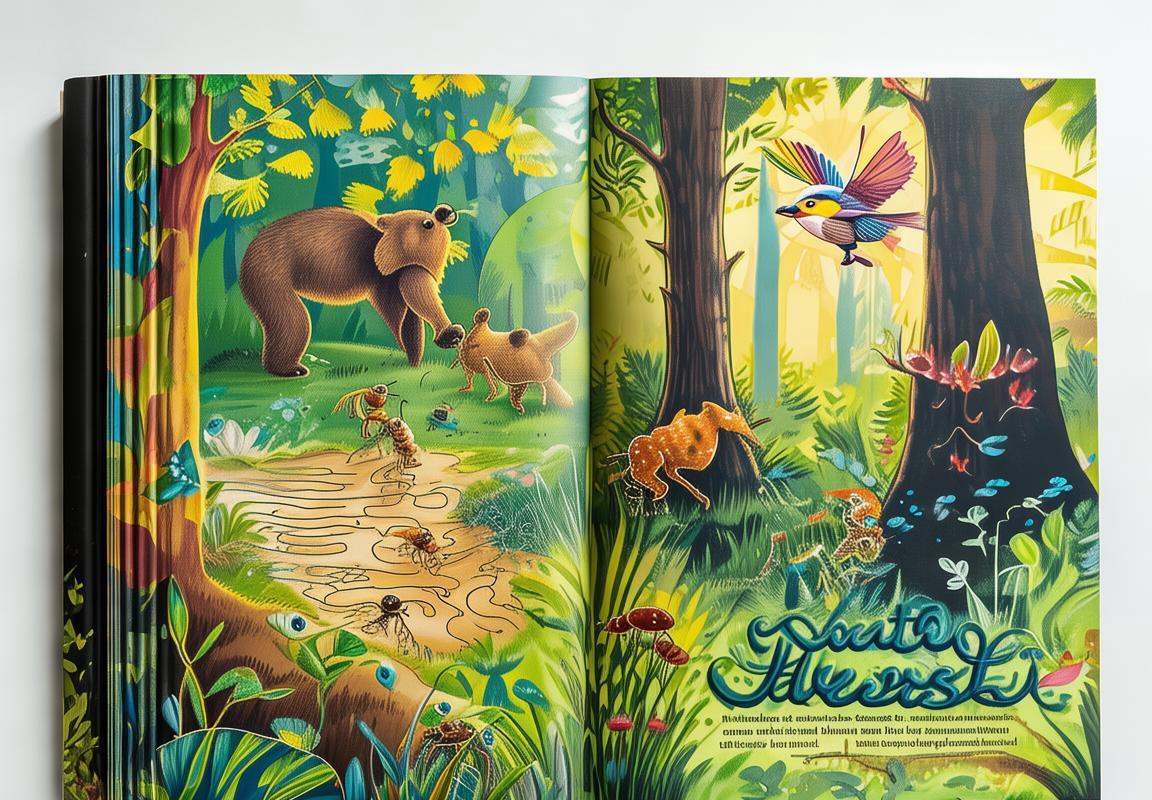
Here’s a book about the jungle. Look at the animals!
สวัสดี! มีหนังสือเกี่ยวกับป่านี้เลย มองเห็นสัตว์หลากหลายเหลือกเรา มีนก มีหมากุ้ง และ่เหลมีหมู็ก มันเป็นสิ่งที่เราชื่อว่า ‘jungle’ ในภาษาอังกฤษ แล้วครับ! อยากดูหนังสือเกี่ยวกับป่ามาก่อนหรือยังต้องการหนังสืออื่นบ้าง?
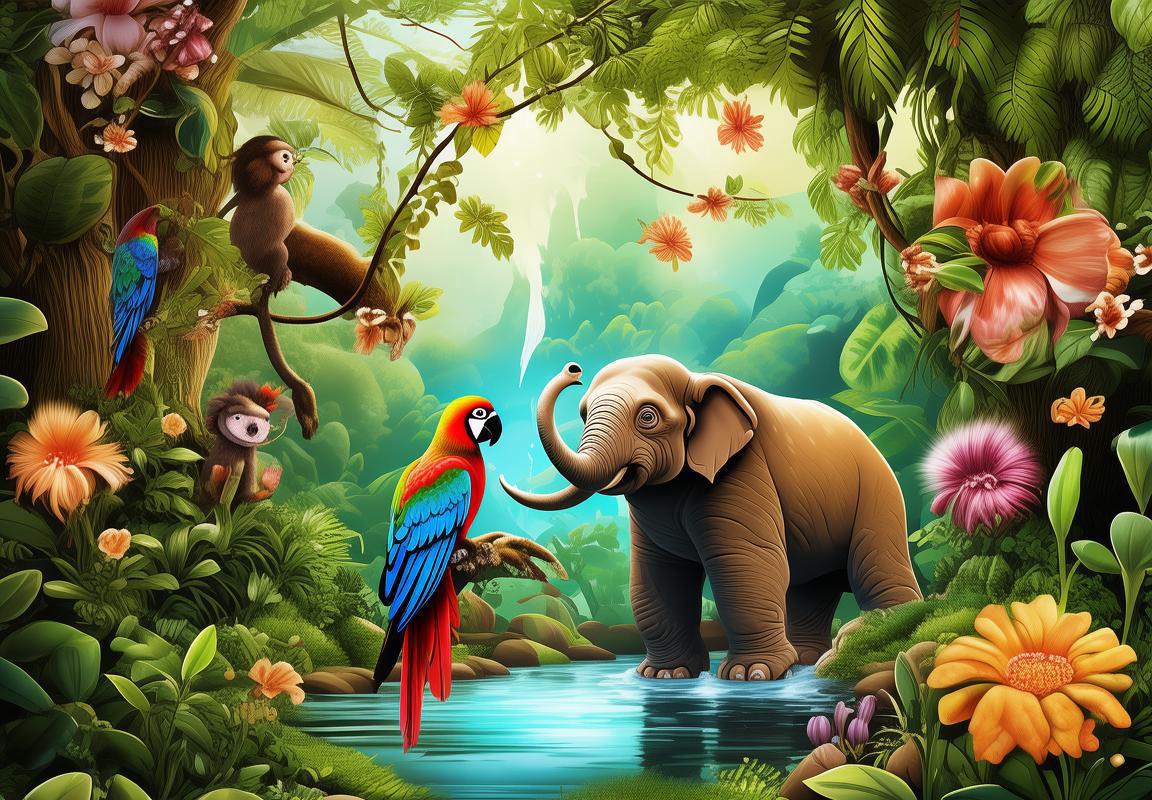
There are so many animals in the jungle. I like this book!
** “มีสัตว์หลากหลายอยู่ในป่าเป็นที่นี้ ฉันชอบหนังสือนี้มาก!”
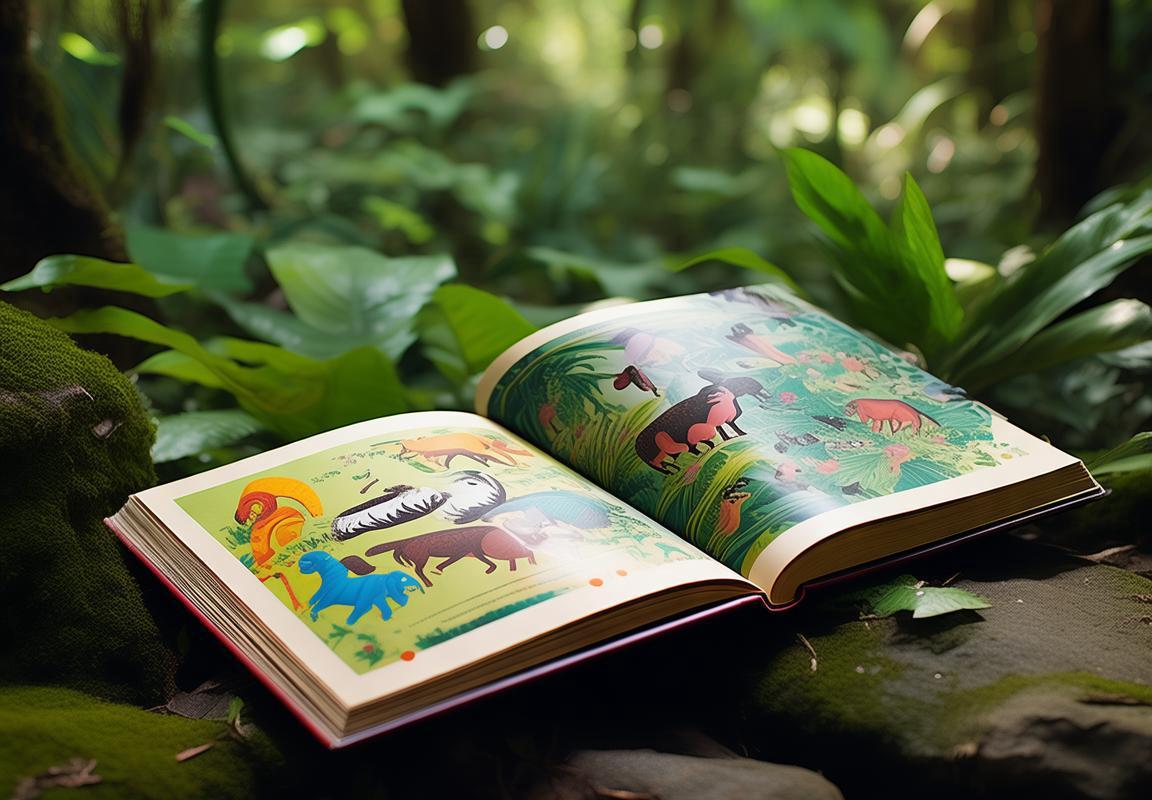
Let’s take both books to the counter. Do you know how to say ‘counter’ in English?
** “ให้เราเอาทั้งสองหนังสือมายังตอนขาย. คุณรู้ว่า ‘counter’ หมายถึงอะไรในภาษาอังกฤษ?”

Yes, it’s ‘counter!
** “ใช่แล้ว! จะเอาหนังสือทั้งสองไปที่ตลาดแล้ว. คุณรู้ว่า ‘ตลาด’ ในภาษาอังกฤษคือ ‘counter’ หรือไม่?”

Great! Now, we just need to pay for them
** “Yes, that’s right! Now we can take them to the counter and pay for them.”

การจ่ายเงิน
** “Let’s count the money and give it to the cashier.”

Here are the books we want to buy. How much are they?
** “จริงๆ แล้ว! หนังสือเหล่านี้เราต้องการซื้อแล้ว. คุณรู้ว่าหลักประกอบของการจ่ายเงินคืออะไร?”

I don’t know. Let’s ask the cashier
การสอบถามบรรจุไซน์**

Excuse me, how much do these books cost?
** “ขอโทษครับ ราคาหนังสือเหล่านี้เท่าไหร่?”
** “ขอโทษ โครงการเหล่านี้ตัวเลขเท่าไหร่ นะ?”

Okay, we have $10. Is that enough?
** “เรามีเงิน 10 แล้ว ครับ มีพอหรือไม่?”

Thank you! We can take our books home now!
“
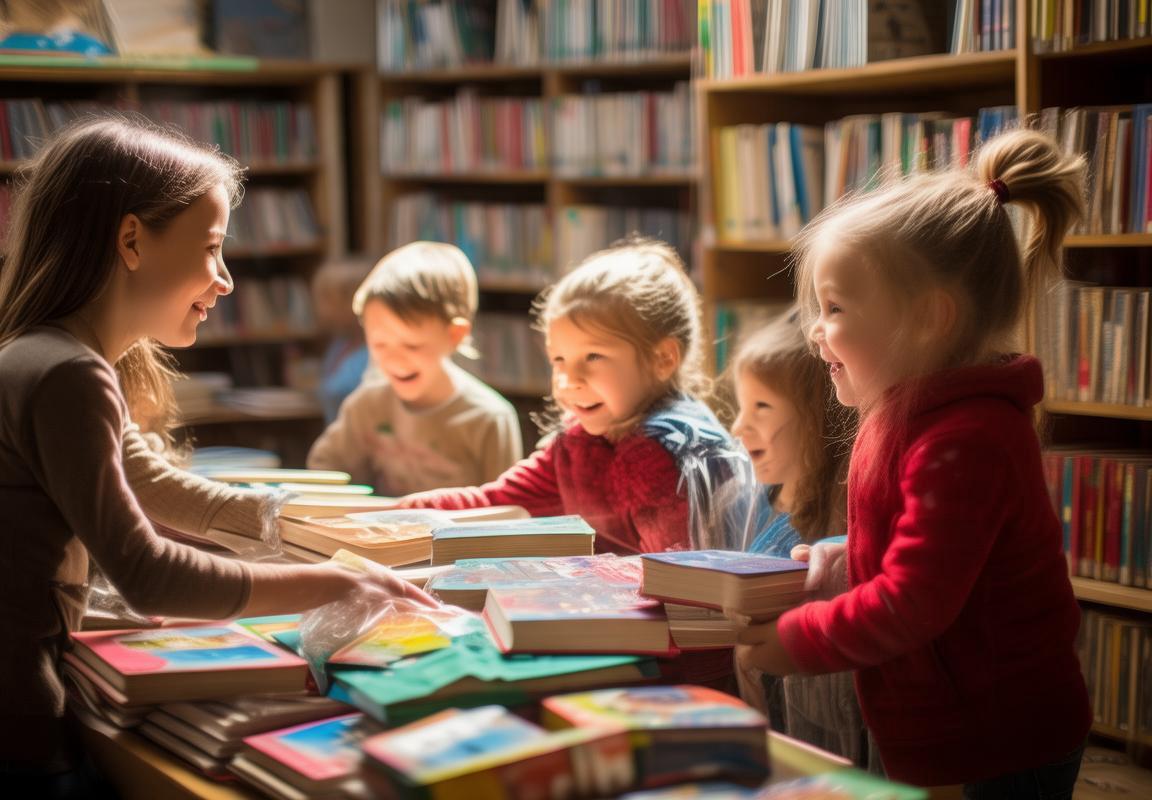
Yes, let’s go home and read our new books!
** “แล้วนี้เราก็มีหนังสือแล้ว และเราจะไปหาเงินเพื่อซื้อมัน”

กลับบ้าน
** “Let’s go home. I can’t wait to read our new books!”

Look at all the new books we have! We’re going to read them tonight
** “เรากลับบ้านแล้ว จะอ่านหนังสือใหม่ของเราในคืนนี้!”

I can’t wait to read about the lions and the jungle
** “ฉันต้องการอ่านเกี่ยวกับหมีและป่าอย่างยิ่ง! ฉันรู้สึกว่ามันจะมีสิ่งน่าสนใจมาก!”
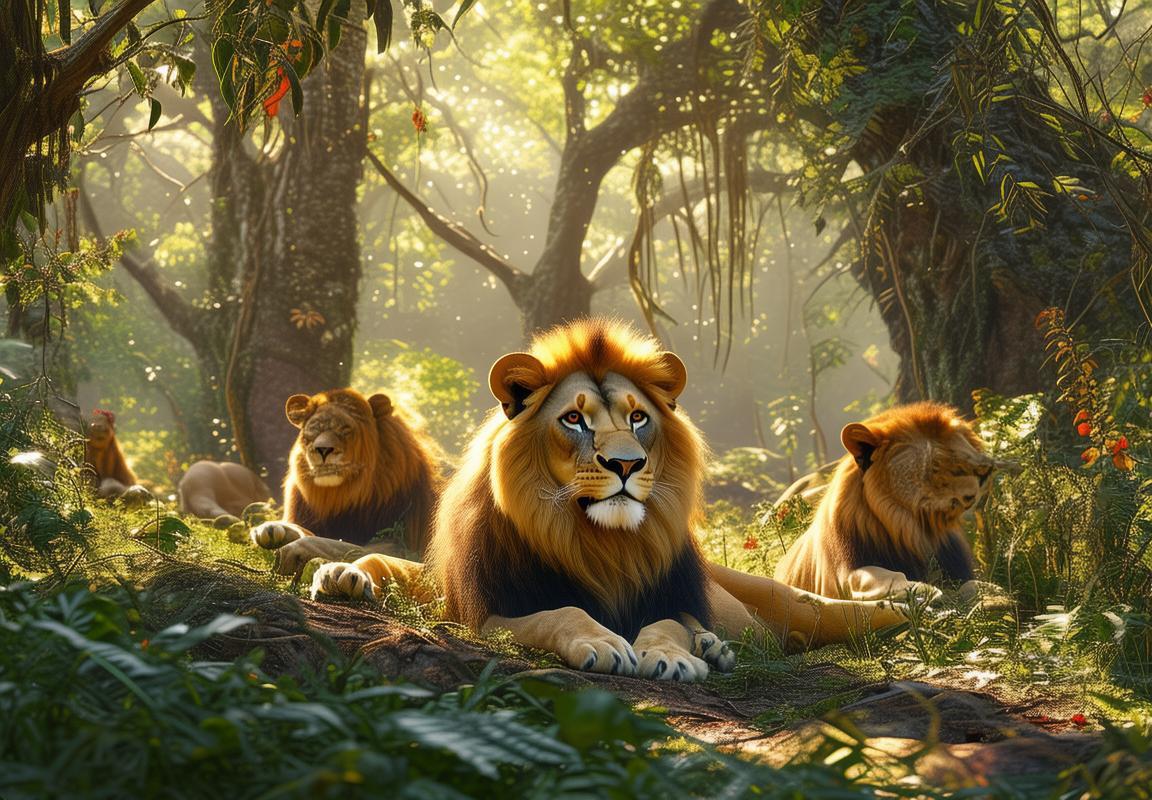
Me too! Let’s go home and enjoy our new adventure
** “เราก็จะไปบ้านแล้ว แล้วอ่านหนังสือที่เราซื้อมาเลย”

Yes, let’s! I’m so happy we went to the bookstore today
** “ใช่แล้ว! จะไปบ้านแล้วเอาหนังสือมาอ่านด้วยกันเลย.”

Me too! It was a great day!
** “เราก็ไปหน้าใจทางแผงหน้าเล่มแล้วนะ! วันนี้เป็นวันที่ดีมาก”

Yes, I can! I’m getting really good at English
** “ยัน! ฉันสนุกมากที่เราไปหน้ากองหนังสือแล้วนี้。”

Me too! Let’s keep practicing and learn more English together!
** “พวกเราร่วมเรียนภาษาอังกฤษด้วยกัน แล้ว! พวกเราจะกลับบ้านแล้วเรียนต่อไป”
